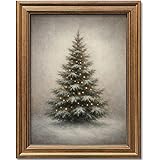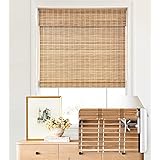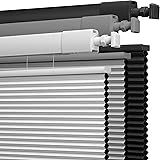The accompanying video beautifully showcases a range of inspiring French Country kitchen ideas, capturing the rustic elegance and timeless appeal of this cherished design aesthetic. Moving beyond the visual inspiration, understanding the foundational principles of French Country design is crucial for translating these captivating images into a cohesive, functional space within your home.
A true French Country kitchen embodies a blend of pastoral simplicity and refined sophistication, reminiscent of homes nestled in the idyllic French countryside. It’s a style that prioritizes comfort, natural materials, and an inherent sense of history and warmth. Crafting such a space requires careful attention to detail, integrating elements that evoke a sense of authenticity and provincial charm.
Embracing the Essence of French Country Kitchen Design
Achieving an authentic French Country kitchen means understanding its core philosophy: a harmonious blend of rustic and elegant, utilitarian and decorative. This style draws heavily from nature and the tradition of craftsmanship. It’s not about pristine, manufactured perfection, but rather a lived-in feel that suggests generations of use and enjoyment.
Materiality: The Foundation of French Provincial Charm
The tactile quality of materials defines French Country aesthetics. Natural elements are paramount, creating a robust and inviting atmosphere. Consider these key components:
- Wood: Distressed timbers are indispensable. Oak, pine, and cherry, often in lighter or medium stains, form the backbone of cabinetry, island bases, and exposed beams. Patina is highly valued; finishes that appear aged, brushed, or slightly worn enhance authenticity.
- Stone: Natural stone, whether rugged flagstone for flooring or finely honed marble or limestone for countertops, grounds the space. These materials offer both durability and an organic texture that instantly evokes the French countryside. Travertine or slate also provide excellent, durable options for flooring.
- Wrought Iron: This robust metal appears in lighting fixtures, pot racks, and hardware. Its dark, sturdy presence provides a beautiful contrast to softer wood and stone elements, adding a touch of classic provincial craftsmanship.
- Copper: Utilitarian and decorative, copper accents are a hallmark. Polished or verdigris-patinated copper pots, pans, and decorative elements introduce warmth and a sense of culinary history.
- Ceramics and Porcelain: Hand-painted tiles, often with intricate patterns or botanical motifs, feature prominently as backsplashes or decorative accents. Large ceramic sinks, or ‘farmhouse sinks,’ are both practical and aesthetically crucial.
The interplay of these materials creates depth and visual interest. Rough-hewn wood might stand beside smooth, cool stone, each enhancing the other’s character.
Color Palettes: A Muted Symphony of Nature
The French Country palette mirrors the natural landscape—soft, earthy, and inviting. It avoids harsh contrasts or overly vibrant hues, favoring a more serene and timeless scheme. Key color considerations include:
- Warm Neutrals: Cream, ivory, butter yellow, and various shades of bisque form the foundation. These colors create a bright yet soft backdrop.
- Muted Earth Tones: Sage green, dusty blue, terracotta, and ochre introduce subtle pops of color, often inspired by flora and fauna. These are never garish but rather blend seamlessly with the natural materials.
- Soft Whites: White is used to brighten and expand the space, often in a slightly off-white or antique white shade to maintain warmth rather than a stark, modern pure white.
Color choices often reflect the regionality of French design—Provence might lean into warmer yellows and lavenders, while other regions might favor cooler blues and greens. The key is always a sense of understated elegance and natural inspiration.
Cabinetry and Layout: Functional Elegance
Cabinetry in a French Country kitchen merges functionality with a distinct aesthetic. Traditional designs often feature inset or partial overlay doors with raised or recessed panels. Distressed finishes are common, mimicking the look of antique furniture. Open shelving also plays a vital role, displaying curated collections of dinnerware, glassware, and decorative ceramics. This approach breaks up expanses of solid cabinetry, contributing to the lived-in, informal charm.
A large, central island is frequently a focal point, offering ample workspace and often featuring a butcher block top or a contrasting stone surface. This island becomes a natural gathering place, embodying the communal spirit of a country home. Layouts typically prioritize ease of movement and efficiency, reflecting the kitchen’s role as the heart of the home.
Lighting: Illuminating Rustic Grandeur
Lighting fixtures serve as significant decorative elements. Wrought iron chandeliers, often ornate with candle-like bulbs, provide ambient light and a touch of grandeur. Sconces, perhaps with fabric shades or simple metal designs, offer accent lighting. Natural light is also maximized through generous windows, often adorned with simple linen or toile curtains that filter light softly.
Appliances and Fixtures: Blending Old and New
Integrating modern appliances into a French Country kitchen requires thoughtful selection. Stainless steel can work, particularly if it has a brushed or satin finish, but panel-ready appliances that disappear behind custom cabinetry are ideal. This maintains the traditional aesthetic without sacrificing modern conveniences. Range hoods can be a design statement, clad in stone, wood, or decorative plaster, often with an antique copper trim.
Fixtures, particularly faucets, typically feature bridge designs or widespread styles in finishes like aged brass, oil-rubbed bronze, or pewter. These choices reinforce the vintage appeal and complement the rustic-chic sensibility of the overall design.
Decor and Accessories: The Finishing Touches
Accessories are not mere afterthoughts; they are integral to establishing the authentic French Country feel. Collections of copper pots and pans, often hung on a wrought iron pot rack, are both functional and decorative. Ceramic pitchers, rustic wooden bowls, woven baskets, and linen textiles with simple patterns or toile de Jouy designs add texture and color. Fresh flowers or herbs in simple vases bring life into the space.
Avoid overly modern or minimalist decor. Instead, opt for items that appear collected over time, each with its own story. Think about a vintage clock, a French confit pot, or a stack of antique cookbooks. These elements collectively contribute to the warm, inviting atmosphere characteristic of classic French Country kitchen design.











